US 4G SIM Card vs. 5G SIM Card: Comprehensive Comparison

As 5G networks are being deployed throughout the US, everyone wants to know if they'll need a new SIM card to access these new, faster speeds. If you've already bought a 5G phone or will be upgrading in the near future, you might be asking yourself: Will my current 4G SIM card work with 5G, or will I need to buy a new one? This guide compares 4G to 5G SIM cards in the US to help you better understand what you actually need for optimal connectivity on your phone.
SIM Card Basics: Function and Form
A SIM card (Subscriber Identity Module) has just one simple core purpose: it stores your own private user identity and security keys securely, essentially serving as your digital ID for your mobile network.
While you're using your phone, the SIM card authenticates with your carrier that you're the valid user so you can place calls, send messages, and receive data. Bear in mind that the SIM card itself doesn't regulate connection speeds—it only qualifies you to connect to whatever kinds of networks (3G, 4G, or 5G) your phone and plan are compatible with.
As technology evolves, SIM cards have progressively gotten smaller. From the original credit card size, to Mini-SIM, to Micro-SIM, now most new smartphones—4G or 5G—are employing the smallest Nano-SIM. So physical size is generally not a distinguishing feature between "4G SIM cards" and "5G SIM cards"—both look nearly identical.
4G SIM Cards Explained
Cellular networks have evolved in a number of generations, with 4G being a leap in terms of speeds and reliability. 4G SIMs were everywhere as carriers revamped their systems to provide faster data and improved connectivity.
What is a 4G SIM Card?
A 4G SIM card is a card that has been set up by your mobile provider specifically for use in connecting to 4G LTE networks. These cards have the information and security features required by 4G standards to authenticate your device and successfully handle your connection on 4G networks. These SIM cards have been the standard in the industry for many years, establishing the basis of the mobile internet experience most individuals are accustomed to.
Aside from buying SIMs directly from major carriers through contracts or their standard prepaid plans, customers can also find specialized prepaid 4G LTE plans from other providers that utilize the same reliable networks, with variation to suit various uses. For instance, providers like Eiotclub offer standard 4G LTE Prepaid SIM Cards compatible with major networks such as Verizon, T-Mobile and AT&T, suitable for phones, tablets, or hotspots.
Can 4G SIM Cards Support 5G Speeds?
Most newer 4G SIM cards can support basic 5G connectivity on 5G-compatible phones, though they may not deliver the full 5G performance potential.
The initial 5G deployment in the US primarily used "5G Non-Standalone" (5G NSA) architecture, which builds 5G radio technology on top of the existing 4G LTE core network. Since 5G NSA relies on the 4G core network for basic connection and signal management, relatively recent 4G Nano-SIM cards typically allow 5G-compatible phones (with appropriate 5G plans) to connect to these 5G NSA signals.
However, older 4G SIM cards might lack the latest parameters or security features, which can affect peak performance. Additionally, basic 4G SIM cards may not support the more advanced capabilities required for future 5G deployments.
5G SIM Cards Explained
When users activate 5G devices or plans, mobile carriers typically provide or recommend specific "5G SIM cards." As mentioned earlier, these cards are physically identical to 4G SIM cards (both are Nano-SIMs). So what's the difference? The main distinctions lie in their internal settings and capabilities.
5G SIM cards have several key features:
- Optimized network settings: SIM cards labeled as "5G" are usually pre-configured with specific network parameters that help transition more smoothly between 4G and 5G networks, or connect more effectively to the carrier's 5G infrastructure.
- Support for 5G Standalone (SA): This is perhaps the most significant difference. The next evolution of 5G is 5G Standalone (SA), which uses a dedicated 5G core network independent of the 4G core. Some US carriers may require specific "5G SIM" cards to connect to their 5G SA networks. Older 4G SIMs might lack the necessary protocols for connecting to this independent 5G core.
- Enhanced security features: 5G standards incorporate updated security protocols. "5G SIMs" may support these newer algorithms, offering better protection compared to older SIMs.
- Carrier policy: Sometimes, providing a "5G SIM" is simply a carrier's standard practice. By issuing the latest SIM technology to all new 5G activations, they reduce potential compatibility issues and streamline customer support.
These features make 5G SIM cards the ideal choice for connecting to modern 5G networks, especially as 5G technology continues to evolve.
4G vs. 5G SIM Cards: Feature Comparison
The differences between 4G and 5G SIM cards might not be obvious at first glance. Here's a detailed breakdown of what sets them apart:
| Feature | 4G SIM Card | 5G SIM Card | What This Means for Users |
| Physical Size | Nano-SIM | Nano-SIM | Both cards look identical and fit in the same SIM slot |
| Basic Function | Authenticates user to mobile network | Authenticates user to mobile network | Both perform the same fundamental job of identifying you to your carrier |
| 4G LTE Access | Full access (with compatible plan/device) | Full access (with compatible plan/device) | Both card types can connect to 4G networks without issues |
| 5G NSA Access | Most recent 4G SIMs work, but not guaranteed | Specifically designed for 5G NSA, guaranteed to work | Your newer 4G SIM might work with basic 5G, but performance isn't guaranteed |
| 5G SA Access | Limited or no compatibility, depends on carrier | Built specifically for 5G SA compatibility | For future standalone 5G networks, a 5G SIM will be more reliable or even required |
| Network Transition | May experience connection issues when switching between 4G and 5G | Optimized for smooth handoffs between network types | Better overall experience with fewer dropped connections when moving between coverage areas |
| Internal Configuration | Basic network parameters | Updated parameters optimized for 5G | 5G SIMs offer better network performance and more efficient connections |
| Security Features | Standard security protocols | Enhanced security features designed for 5G | Better protection against newer security threats with 5G SIMs |
| Future Compatibility | May become obsolete as 5G SA expands | Designed for forward compatibility | A 5G SIM is a better long-term investment as networks evolve |
| Carrier Requirements | May not meet all carrier specifications for 5G | Meets all carrier requirements for 5G service | Using a 5G SIM ensures you won't face carrier-specific limitations |
From this comparison, it's clear that while a 4G SIM might be sufficient for early 5G adoption, a proper 5G SIM card provides better overall performance and ensures you'll be ready for advanced 5G features as they roll out.
How to Get the Right SIM Card for 5G: Five Essential Steps
Most users don't know whether they'll need a new SIM card when they transition to 5G service. This easy guide will take you through the practical aspects of making the switch without making it harder than necessary.
Contact Your Mobile Provider
Your carrier—Verizon, T-Mobile, or AT&T—has some policies for 5G access. Each company handles the 5G SIM differently, with some sending out new SIMs with device upgrades automatically and others requiring special requests. A quick call to customer service will clarify exactly what your provider recommends for your specific phone model and service plan.
Ensure Your Device Supports 5G
Your phone's hardware determines its network compatibility regardless of the SIM card type. More recent phones labeled as "5G phones" include the necessary technology by default, but older phones aren't 5G-capable even with a 5G SIM card. Make sure your device not only supports 5G overall but also supports the frequency bands your carrier operates on.
Examine Your Service Plan
Carriers typically structure their plans to offer 5G access at specific service levels. Review your plan now to confirm it includes 5G connectivity—this is typically called out in your account dashboard or monthly invoice. Some lower-cost or older plans may need to be upgraded to receive the faster network speeds.
Review 5G Availability in Your Area
Network infrastructure varies widely by location, so coverage maps are an essential research tool. The newest and best phone and SIM combination is no benefit where 5G has not been rolled out. Interactive maps with specific coverage areas for different network technologies are on most carrier sites, so you can determine if 5G service reaches your most frequented locations.
When to Upgrade Your SIM Card
Replace your existing SIM in the following special circumstances: activating a new 5G device with carrier-supplied SIM; troubleshooting has not fixed ongoing 5G connectivity issues; or intending to use advanced capabilities such as network slicing or ultra-low latency applications. Doing so proactively avoids compatibility problems as carriers move forward with standalone 5G architecture.
Check If Your SIM Is Ready for 5G!
Although they look alike, 4G and 5G SIM cards differ in features. While newer 4G SIMs are compatible with early 5G networks, certain 5G SIM cards support enhanced performance, enhanced security, and compatibility with future standalone networks. Your need for an upgrade depends on your carrier requirements, device capability, service plan, and existing 5G coverage in your region. Ask your provider if your current SIM will give you the complete 5G experience you desire.


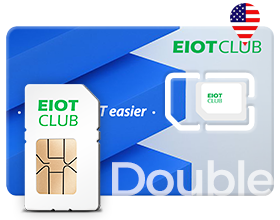
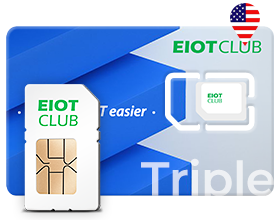

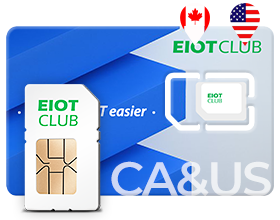

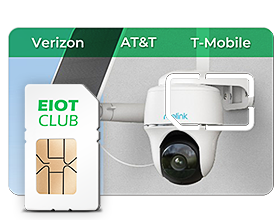

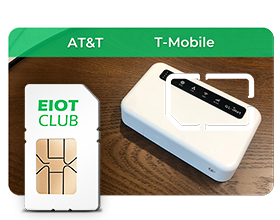



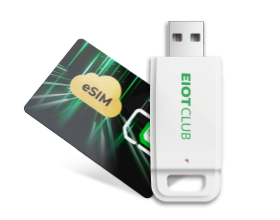









 Refill
Refill






